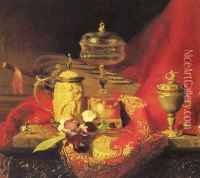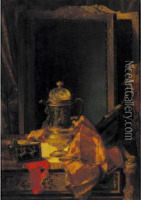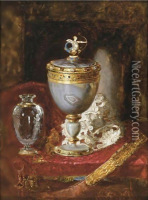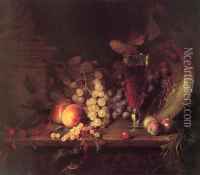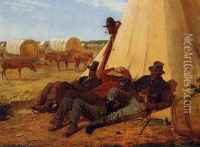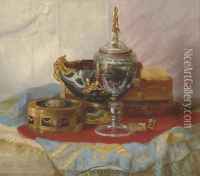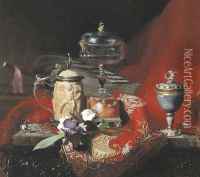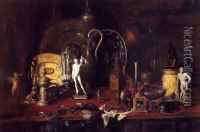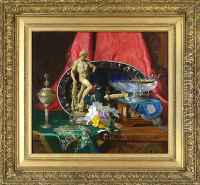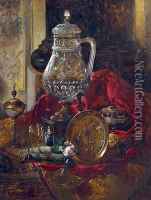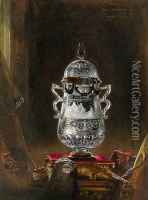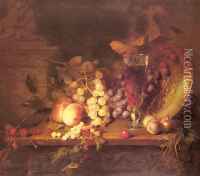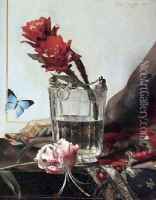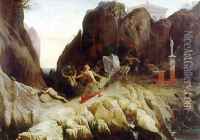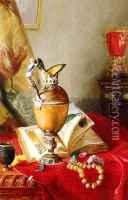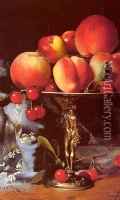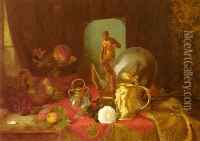Blaise Alexandre Desgoffe Paintings
Blaise Alexandre Desgoffe was a French painter known for his detailed still lifes that reflect the influence of the Dutch masters of the 17th century. Born on October 19, 1830, in Paris, France, Desgoffe was introduced to the art world early in life, as his father was a scenery designer for the Paris Opera. This background likely provided him with an appreciation for intricate detail and composition.
Desgoffe initially trained under his father and then entered the École des Beaux-Arts in Paris where he was a pupil of the neoclassical painter Ingres, who was known for his clear outline and finely drawn detail. Ingres's influence is evident in Desgoffe's meticulous approach to his work. Desgoffe also studied with another painter, Flandrin, and these educational influences would shape his artistic style.
Desgoffe's paintings typically featured arrangements of objects such as fruits, flowers, and antiques, all rendered with great precision and realism. His skill in depicting textures and surfaces made his works stand out during his lifetime. He exhibited at the Paris Salon, the official art exhibition of the Académie des Beaux-Arts in Paris, and received a third-class medal in 1861 and a second-class medal in 1863. His work was well-received, garnering attention and praise for its technical excellence.
The artist's attention to detail and his ability to recreate the appearance of various materials won him a specialized audience that appreciated the exactitude and labor-intensive nature of his paintings. Desgoffe's work can be seen as a continuation of the still life tradition, maintaining the genre's significance in an era that was seeing dramatic shifts in the art world with the rise of movements like Impressionism.
Despite the changing trends in art during his lifetime, Desgoffe remained committed to his style, and his work was collected by notable personalities, including Empress Eugénie, the wife of Napoleon III. His paintings are now held in various museum collections, including the Louvre in Paris.
Desgoffe passed away on February 24, 1901, in Paris, leaving behind a legacy of highly detailed and beautifully composed still lifes that continue to be appreciated for their craftsmanship and historical connection to the traditions of European painting.
